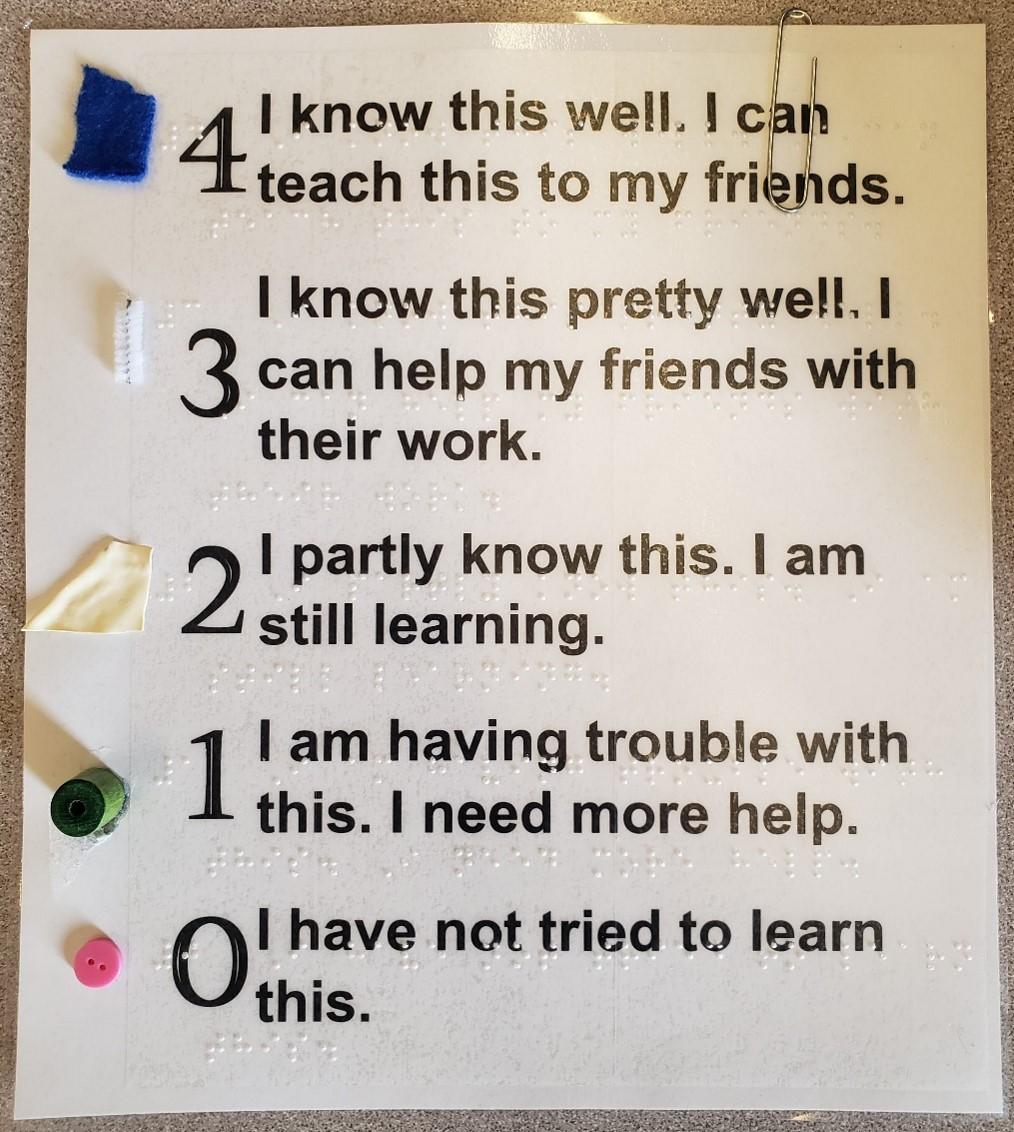Self-Assessment in the English Classroom (School for the Blind)
Written by Emma Avery, Secondary English Language Arts, School for the Blind
Student self-assessment is an integral part of the learning process and a skill that will help students continue learning after they graduate. A way that students self-assess in my English Language Arts classroom is using a 4-point scale.
Each desk in my room has a student-friendly version of the 4-point scale attached with Velcro to the top right corner. It is a laminated sheet with large print, sticky Braille on top, and tactile symbols for each of the values.
Each 4-point scale has a clothespin attached. During class, after giving instructions or finishing part of a lesson, I will ask students to self-assess how well they understand what I’ve taught, or how well they can demonstrate a skill. Students will move the clothespin next to the number that corresponds with their self-assessment. Students will often say they don’t need help and don’t have any questions when I ask, but if I ask them to self-assess on the scale right after some will mark themselves as a 1 or 2.
Based on each student’s self-assessment, they can identify if they need help with part of an assignment. As the teacher, I can also use this data to plan follow-up or extension lessons. Since integrating this self-assessment into my lesson structure, students are more engaged with learning, more aware of the progress they are making, and more motivated to learn.

